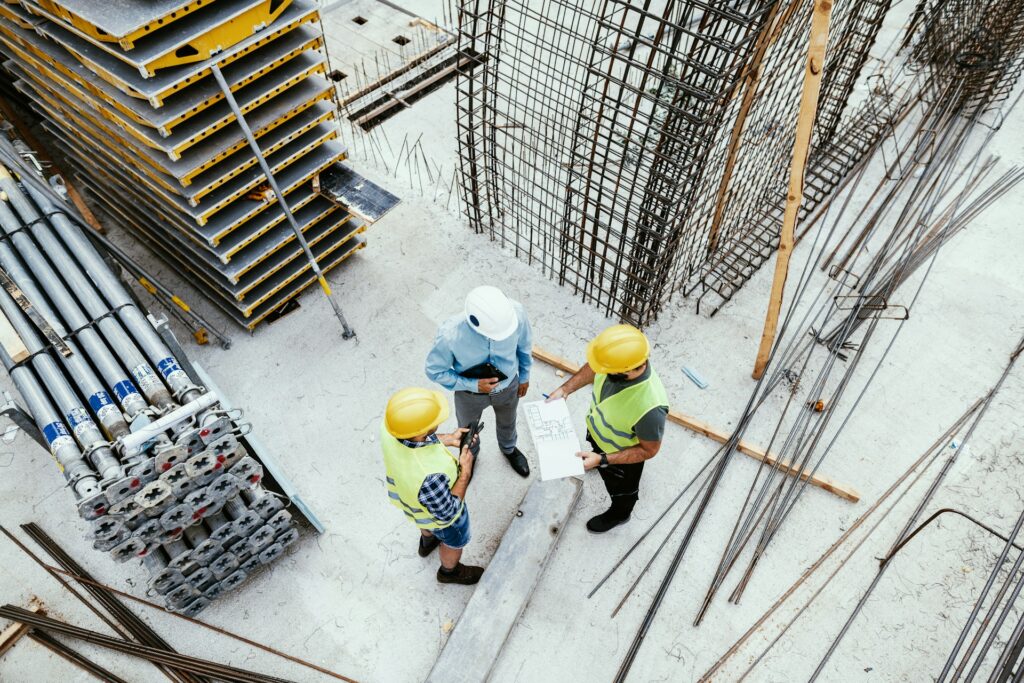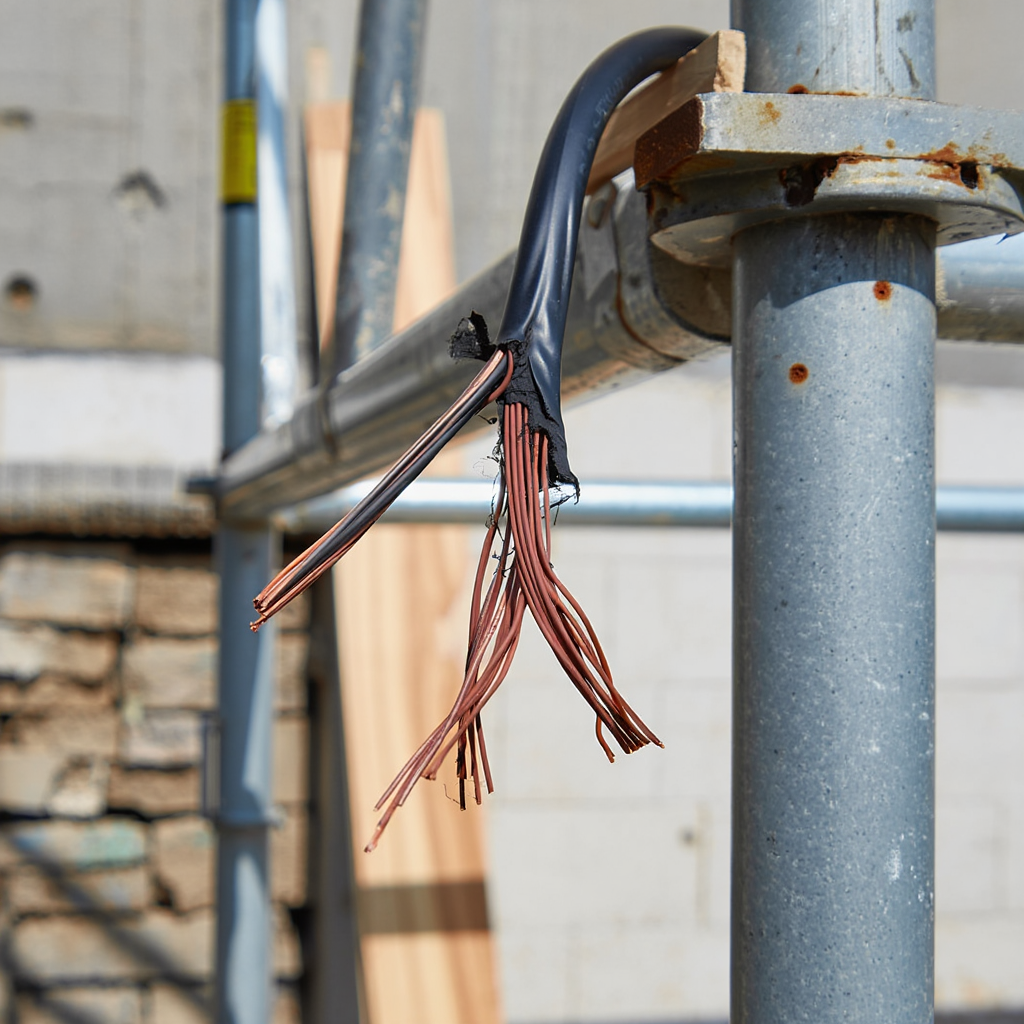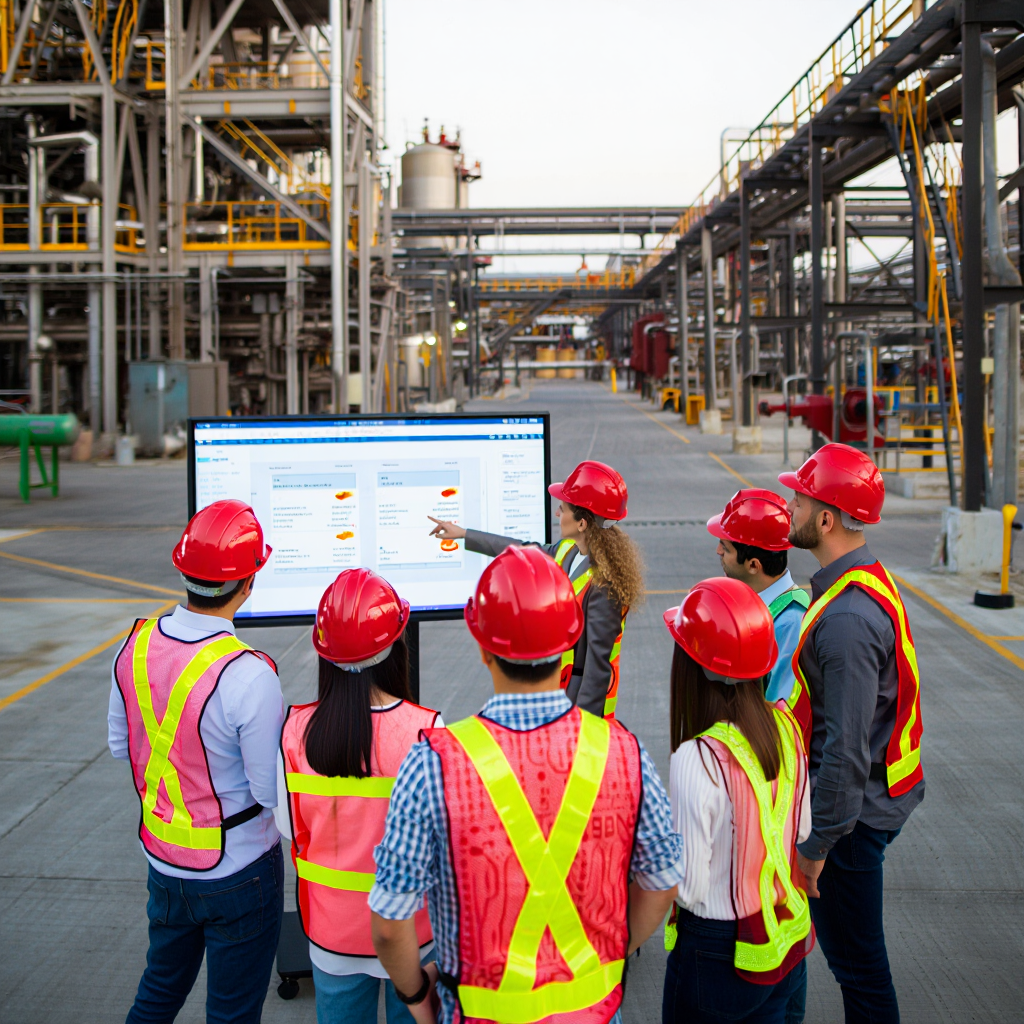Whether you’re managing a high-rise build in a downtown core, overseeing a 24/7 distribution hub, or juggling safety compliance across dozens of field sites—OSHA compliance is the razor-thin line between business as usual and a project-grinding shutdown.
In the U.S., OSHA (Occupational Safety and Health Administration) lays down the law when it comes to workplace safety. And we mean that literally. Their standards aren’t suggestions, they’re enforceable rules backed by fines, inspections, and legal muscle. For industries like construction and general industry, the regulations aren’t just long—they’re layered, technical, and packed with nuance. Knowing which ones apply to your workforce—and how to meet them—can feel like navigating a minefield.
That’s where this guide comes in.
We’re breaking down the difference between the construction and general industry standards, spotlighting the high-risk areas that get companies fined the most, and showing you ways to stay ahead—without drowning in binders, clipboards, or Excel.
And if you’re already stretched thin? Digital platforms are how smart teams get ahead of the curve. From digitized inspections to real-time reporting and automated compliance tracking, it’s built to keep you covered—without creating more work.
What Are OSHA Standards?
OSHA standards are federally mandated, legally enforceable regulations designed to reduce workplace injuries, illnesses, and fatalities. These aren’t vague safety tips—they’re the hardline rules that employers are required to follow by law. Think of them as the operational safety playbook for American job sites.
Related Read: Osha Compliance Checklist
OSHA breaks these standards down into specific categories depending on the kind of work being done. The two most widely enforced categories are:
- 29 CFR Part 1926 – Construction: Covers everything from scaffolding and fall protection to trench safety, PPE, and heavy equipment use. If your team is working on new builds, renovations, demolitions, or large-scale infrastructure projects—this section applies to you.
- 29 CFR Part 1910 – General Industry: Focuses on workplace safety standards in factories, warehouses, distribution centers, refineries, and similar environments. It includes rules on machine guarding, hazard communication, confined space entry, and more.
Some companies straddle both worlds—like a contractor with a warehouse or a manufacturing plant that occasionally sends teams into the field. In those cases, understanding which set of standards applies to which crew, location, or task is crucial.
Because this isn’t just about avoiding fines. It’s about protecting the people doing the work, keeping your operations running smoothly, and making sure your company’s name stays off the OSHA violation report.
And when the rules are this dense? Having a system to help manage, track, and prove compliance can be the difference between passing an inspection and scrambling to respond to a citation.
Why OSHA Standards Are Critical
Let’s cut the fluff—OSHA isn’t just a bureaucratic hoop to jump through. These standards are the frontline defense for every worker walking steel beams, climbing scaffolds, lifting pallets, or locking out machines. When followed right, they protect lives, stabilize operations, and unlock opportunities.
Here’s how:
Worker Safety
This is the heart of it. We’re not just talking about avoiding citations—we’re talking about human beings making it home for dinner. OSHA’s fall protection standard alone has saved over 1,000 lives in the last 10 years. That’s not a stat—that’s real people: fathers tucking their kids in, mothers clocking out without a broken back, coworkers walking out instead of being wheeled out. When safety is enforced, life doesn’t get interrupted.
Legal & Financial Risk Mitigation
One misstep can bleed your balance sheet dry. As of 2025, a single serious OSHA violation can rack up $16,550 in fines. And it stacks. One roofing contractor recently faced over $200,000 in penalties after a single surprise inspection uncovered repeat violations. Multiply that across multiple sites or crews, and you’re not just risking cash—you’re risking your license, contracts, and credibility.
Operational Efficiency
Unsafe sites don’t just injure workers—they cripple timelines. An accident can shut down an entire operation for hours or even days. Equipment gets frozen, investigations start, morale plummets. On the flip side, OSHA-aligned environments run tighter and faster, with fewer delays, fewer audit red flags, and smoother handoffs between shifts.
Morale and Retention:
You can’t fake caring about safety. When crews see shortcuts being taken or hazards ignored, they start updating resumes. But when they know management is serious—about inspections, reporting, training, and follow-through—they stay focused, stay loyal, and look out for each other. Trust builds teams, and safety builds trust.
Better Insurance and Contracts:
Your EMR (Experience Modification Rate) isn’t just a number—it’s your company’s safety credit score. High EMR? Expect sky-high premiums and contracts that pass you over. Low EMR, solid OSHA logs, and documented compliance? That’s how you win bids, secure government jobs, and pay less in the long run.
Bottom line: OSHA compliance isn’t red tape—it’s your runway. And with digital tools helping teams stay inspection-ready, report accurately, and fix issues fast, playing by the rules becomes your biggest competitive edge.
OSHA Standards for the Construction Industry
Construction is chaos by design—fast-moving crews, ever-changing sites, and hazards that shift by the hour. That’s why OSHA created 29 CFR Part 1926, a dedicated standard set tailored to the high-risk, high-variability world of construction. Whether you’re overseeing concrete pours on a tower build or trenching in the suburbs, these regulations are the guardrails keeping your people—and your projects—out of harm’s way.
Related Read: Oil and Gas Safety and Risk Management
Here’s a breakdown of the most cited and mission-critical subparts every construction leader needs to know:
Subpart C – General Safety and Health Provisions
This one lays the foundation. It includes rules around accident prevention programs, PPE availability, emergency response plans, and first aid access. If you’re not setting the tone here, nothing else sticks. Think of it as the job site’s baseline operating system.
Subpart E – Personal Protective and Life Saving Equipment (PPE)
It’s not just about wearing gear—it’s about wearing the right gear for the right hazard, and ensuring it’s inspected, fitted, and functional. Hard hats, gloves, face shields, respirators—OSHA doesn’t just require them, it spells out how and when they must be used.
Subpart L – Scaffolding
Temporary platforms are a permanent danger. This subpart tackles scaffold strength, guardrail placement, planking, and access. One mistake here can mean a 20-foot fall. Compliance keeps your scaffolds—and your crews—standing strong.
Subpart M – Fall Protection
Arguably the most critical (and most frequently fined) subpart. It mandates fall arrest systems, anchor points, and guardrails for work six feet and up. With falls still the leading cause of construction fatalities, this section isn’t just a rule—it’s a lifesaver.
Subpart N – Cranes, Derricks, Hoists, Elevators, and Conveyors
Massive equipment means massive responsibility. This standard requires certified operators, proper rigging, and detailed load charts. It ensures that when you lift 10,000 pounds over a crew’s head, you’re not crossing your fingers.
Subpart P – Excavations
Trenches collapse in seconds—burying workers before anyone can react. This subpart mandates trench wall support, shoring systems, sloping, and inspections. It’s the frontline defense in underground safety.
Subpart K – Electrical
Temporary power systems are common on active sites, but they’re just as deadly. Subpart K ensures safe wiring practices, grounding, GFCIs, and lockout/tagout procedures for energized systems. One bad circuit shouldn’t take out a crew.
Subpart H – Materials Handling, Storage, Use, and Disposal
Every site has materials in motion—from rebar bundles to steel beams. This subpart regulates equipment used for moving and lifting, how materials are stacked and stored, and the safe disposal of hazardous substances.
Subpart V – Power Transmission and Distribution
This one’s vital for utility contractors. It includes safe practices for working near live lines, grounding, insulation, and protective gear for electrical crews exposed to high-voltage environments.
Field1st in Action: Instead of flipping through binders or cobbling together spreadsheets after an inspection, safety leads use Field1st to track compliance against every one of these subparts in real time. Think mobile-first checklists, live audit trails, automated reminders, and task assignments—all synced across projects. Whether it’s fall protection on the 12th floor or trench shoring in the dirt, Field1st puts safety enforcement in your pocket, not buried in the office.
OSHA Standards for General Industry
Not every hazard comes from heights or heavy lifts. In warehousing, logistics, manufacturing, and food processing environments, the dangers are often quieter—but just as deadly. That’s why OSHA created 29 CFR Part 1910, a broad set of standards built to govern the fixed-site, process-driven operations of general industry.
These rules cover everything from slippery loading docks to chemical storage—and they’re non-negotiable. Here’s a breakdown of the most important subparts:
Subpart D – Walking-Working Surfaces
One spill. One uneven tile. One missed rung on a ladder. That’s all it takes to send a worker to the hospital. This subpart lays out specific guardrail, handrail, and ladder requirements—plus protocols for inspections and fall hazard elimination. It’s about making every step on the floor safe, stable, and secure.
Subpart E – Exit Routes and Emergency Planning
In an emergency, seconds matter. Subpart E mandates clear egress paths, visible signage, reliable alarm systems, and detailed evacuation plans. Whether it’s a fire, a chemical release, or an equipment explosion—you don’t want confusion when every moment counts.
Subpart H – Hazardous Materials
Flammable, corrosive, explosive—it doesn’t matter what’s in the drum. This subpart governs how chemicals are stored, labeled, transferred, and cleaned up. From Material Safety Data Sheets (SDS) to spill kits, it’s your front line for chemical safety and incident prevention.
Subpart I – Personal Protective Equipment (PPE)
Eye protection, gloves, steel-toed boots—this isn’t guesswork. Subpart I demands a PPE hazard assessment for each task, and requires employers to not only provide the gear, but also train employees in its proper use. Because PPE only works when it’s used correctly and consistently.
Subpart J – General Environmental Controls
Ventilation. Sanitation. Noise. These don’t sound like immediate threats—but get them wrong, and you’ve got respiratory illnesses, hearing damage, or biological contamination. Subpart J keeps your air breathable, your restrooms usable, and your workplace livable.
Subpart L – Fire Protection
Fire safety isn’t just extinguishers hanging on the wall. This subpart outlines placement, inspections, training, and maintenance of alarms and suppression equipment. It also sets protocols for fire brigades and fire watch duties during hot work or shutdowns.
Subpart O – Machinery and Machine Guarding
Moving belts. Spinning blades. Robotic arms. One misstep or missing guard can lead to amputations, crush injuries, or worse. Subpart O is crystal clear on how to protect workers from dangerous mechanical motion—through guarding, labeling, and lockout/tagout.
Subpart S – Electrical Safety
In fixed facilities, exposed wiring or improperly grounded panels are ticking time bombs. Subpart S lays out requirements for wiring, panel labeling, overcurrent protection, and training. Whether you’re maintaining a conveyor system or rewiring a processing line, this standard protects against shocks, burns, and arc flashes.
Subpart Z – Toxic and Hazardous Substances
This one’s all about exposure. Subpart Z sets permissible exposure limits (PELs) for hundreds of substances—from silica dust to formaldehyde. It mandates respiratory protection programs, medical surveillance, and engineering controls to keep airborne threats at bay.
Field1st Helps Here Too: Let’s be real—when you’re managing multiple facilities, each with different operations and hazards, keeping track of compliance can be a nightmare. That’s where Field1st steps in. It gives you a centralized dashboard with real-time visibility across all your sites, teams, and safety activities. Whether you’re inspecting ladders at one plant, tracking respirator fit tests at another, or logging a chemical near miss—Field1st brings it all together, audit-ready and always one step ahead.
Construction vs General Industry: What’s the Difference?
Understanding the difference between OSHA’s two main categories—Construction (29 CFR 1926) and General Industry (29 CFR 1910)—isn’t just bureaucratic nitpicking. It’s essential for applying the right protections to the right people, in the right environments. Here’s how they break down:
| Category | Construction (29 CFR 1926) | General Industry (29 CFR 1910) |
|---|---|---|
| Work Environment | Dynamic, project-based | Static, routine operations |
| PPE | Fall protection, excavation | Chemical exposure, machinery |
| Hazards | Heights, structural integrity, scaffolding | Machinery, chemical handling, confined spaces |
| Applicability | Temporary worksites | Permanent worksites |
| Training Requirements | Job-specific, task-based | Ongoing, hazard-based |
Why It Matters:
If your operation includes both a fabrication shop and a field crew, or if you bounce between sites and static facilities, you may need to comply with both sets of OSHA standards—simultaneously. That’s not just a paperwork headache; it’s a logistical risk if you miss a requirement.
This is where clarity becomes your best friend—and where digital platforms can be a lifesaver. With one platform to manage both construction and general industry compliance, you eliminate silos, reduce confusion, and ensure your teams are always covered—whether they’re building scaffolds or operating forklifts.
No more guessing. No more toggling between spreadsheets. Just one unified view of who’s trained, what’s compliant, and where your gaps are—before OSHA points them out for you.
How to Stay Compliant with OSHA Standards

Meeting OSHA requirements isn’t about scrambling before an inspection—it’s about building a culture and system that’s always ready. Here’s how top safety teams stay ahead of the curve:
Run Safety Audits Routinely
Compliance starts with visibility. Routine safety audits and jobsite walk-throughs help you identify potential hazards before they turn into reportable incidents—or fines. From blocked exits to unguarded equipment, regular inspections ensure nothing slips through the cracks. Proactive beats reactive, every time.
Related Read: Health and Safety Audit
Use Role-Specific Checklists
An electrician doesn’t face the same hazards as a forklift operator. And a welder needs a different pre-task protocol than someone working in cold storage. That’s why generic checklists fall short. Build customized, role-specific safety checklists that speak the language of each trade—and ensure the right risks are being addressed at the right time.
Digitize Everything
Paper gets lost. Spreadsheets get outdated. And by the time that JSA makes it back to the office, the moment to act is already gone. With Field1st, crews can log everything in real time—right from their phones. From incident reports and near-miss logs to inspection photos, digital signatures, and time-stamped notes, every record is audit-ready the moment it’s created.
Train Like It Matters
Outdated safety training is a compliance time bomb. OSHA doesn’t just want proof that your team was trained—they want proof that they were trained on time, on task, and according to standard. On a digital platform you track every certification by worker, by role, and by expiration date—so no one steps onto a jobsite unqualified or unprepared.
Track Leading Indicators
Don’t just log what went wrong—log what almost did. Near misses, safety observations, and positive interventions are critical leading indicators that predict future incidents. With Field1st, you can collect and analyze this data across teams and timelines to spot trends, surface blind spots, and dial in your preventative strategy.
Create and Track CAPAs
See a hazard? Fixing it isn’t optional—it’s required. Corrective and Preventive Actions (CAPAs) should have clear ownership, deadlines, and follow-through. With Field1st, assigning a CAPA takes seconds. The platforms keeps it alive with automated reminders and real-time status updates—so nothing falls off the radar.
Bottom line: Compliance isn’t about checking boxes. It’s about building a safety system that works in the real world—fast, field-ready, and foolproof. Field1st was designed for exactly that.
Field1st: Your Partner in OSHA Compliance
Compliance is about creating a system that works in the real world. That’s why Field1st was built by people who’ve lived it.
What it brings to your team:
- Mobile-ready OSHA checklists
- Automated corrective actions
- Real-time audit trails
- Role-specific access
- Visual dashboards to track progress and risk
Whether you’re in construction or general industry—or both—Field1st puts your entire safety operation in your pocket.
Book a Free Demo Today and see how Field1st simplifies OSHA compliance without slowing down the job.




